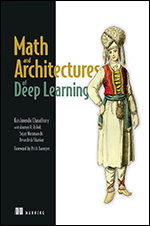Computational Theory: Using Turing, Transducers, & Complexity Classes
Computational Theory
| Intermediate
- 12 videos | 46m 6s
- Includes Assessment
- Earns a Badge
Discover the concepts of pushdown automata, Turing machines, and finite transducers in this 12-video course, in which learners can examine how to identify limitations and complexities in computation and how to apply P and NP classes to manage them. Begin by recalling the machine learning analytical capabilities of grammar, then look at context-free grammar normal forms, using Chomsky normal forms and Greibach normal forms to manage context-free grammars. Describe pushdown automata and features of nondeterministic pushdown automata. This leads on to Turing machines, their capabilities, and the prominent variations in the building themes of Turing machines. Learners explore the concept of finite transducers, and the types of finite transducers. Recall the underlying limitations of computations and the limitations of computational theory, and the complexities of computation, computational theory complexities, and how it can impact Turing machine models and language families. Learn about handling computation complexities with P class and handling computation complexities with NP class. The concluding exercise involves describing properties and variations of Turing machines, types of finite transducers, and properties of recursively enumerable languages.
WHAT YOU WILL LEARN
-
Recall the analytical capabilities of grammarUse chomsky normal forms and greibach normal forms to manage context-free grammarsDescribe pushdown automata and the features of non-deterministic pushdown automataDescribe turing machines and their capabilitiesList the prominent variations of themes that can be used to build turing machinesDescribe finite transducers and list the prominent types
-
Recall the underlying limitations of algorithmic computationsRecognize how computational complexities can impact turing machine models and language familiesRecall how to manage computational complexities using p and np classesDefine recursive and recursively enumerable languages and their essential propertiesDescribe properties and variations of turing machines, types of finite transducers, and properties of recursively enumerable language
IN THIS COURSE
-
1m 50s
-
4m 46sAfter completing this video, you will be able to recall the analytical capabilities of grammar. FREE ACCESS
-
3. Normal Forms in Context-Free Grammar4m 44sLearn how to use Chomsky normal forms and Greibach normal forms to manage context-free grammars. FREE ACCESS
-
4. Pushdown Automata3mAfter completing this video, you will be able to describe pushdown automata and the features of non-deterministic pushdown automata. FREE ACCESS
-
5. Turing Machines4m 21sUpon completion of this video, you will be able to describe Turing machines and what they are capable of. FREE ACCESS
-
6. Turing Machine Themes4m 7sAfter completing this video, you will be able to list the prominent variations of themes that can be used to build Turing machines. FREE ACCESS
-
7. Finite Transducers Types3m 47sUpon completion of this video, you will be able to describe finite transducers and list the most prominent types. FREE ACCESS
-
8. Computation Limitations5m 52sAfter completing this video, you will be able to recall the underlying limitations of algorithmic computations. FREE ACCESS
-
9. Computational Complexity6m 7sAfter completing this video, you will be able to recognize how computational complexities can impact Turing machines and language families. FREE ACCESS
-
10. P and NP Class2m 57sAfter completing this video, you will be able to recall how to manage computational complexities using the P and NP classes. FREE ACCESS
-
11. Recursively Enumerable Languages2m 51sLearn how to define recursive and recursively enumerable languages, and their essential properties. FREE ACCESS
-
12. Exercise: Turing Machines and Finite Transducers1m 46sAfter completing this video, you will be able to describe properties and variations of Turing machines, types of finite transducers, and properties of recursively enumerable languages. FREE ACCESS
EARN A DIGITAL BADGE WHEN YOU COMPLETE THIS COURSE
Skillsoft is providing you the opportunity to earn a digital badge upon successful completion on some of our courses, which can be shared on any social network or business platform.
Digital badges are yours to keep, forever.






